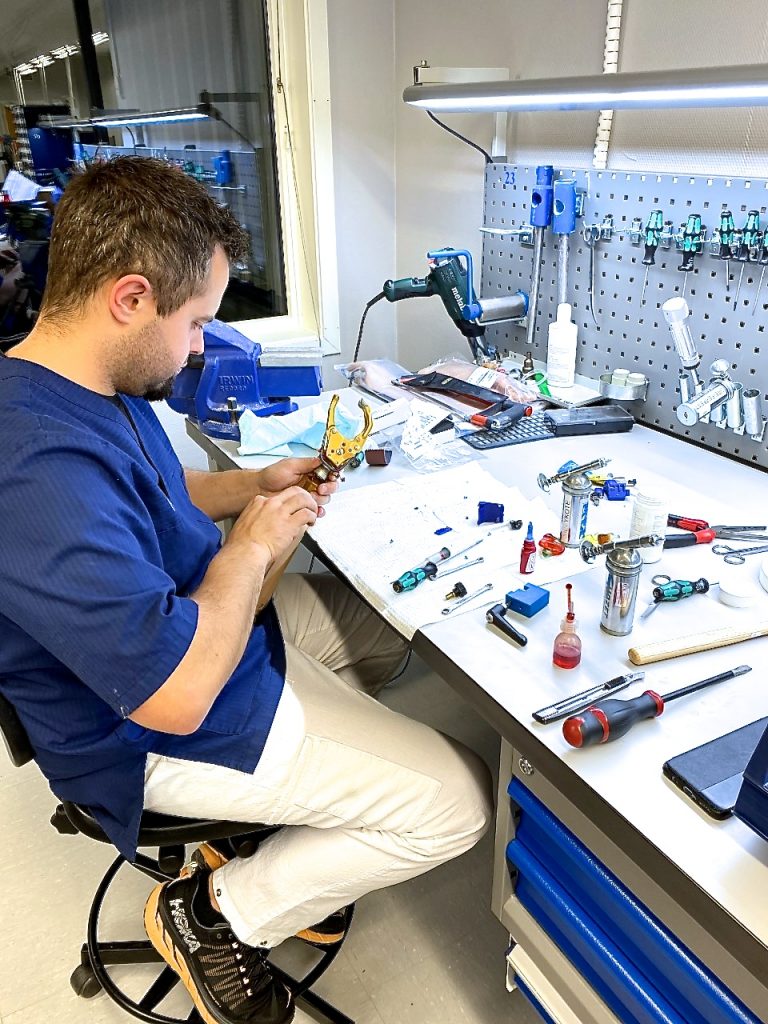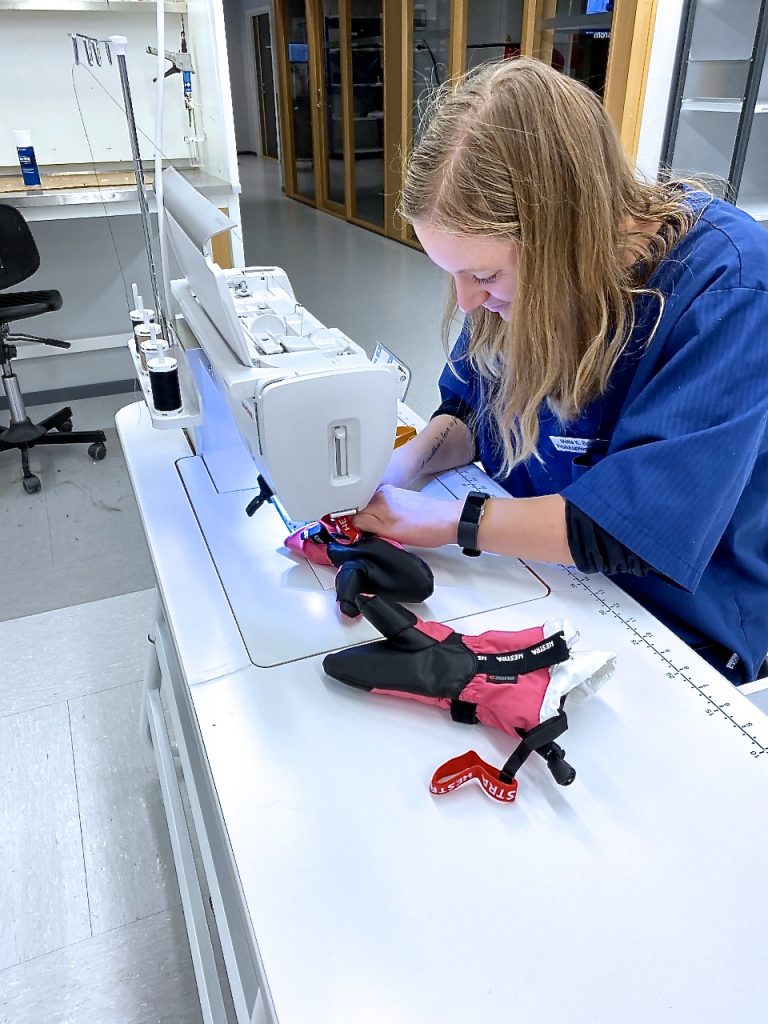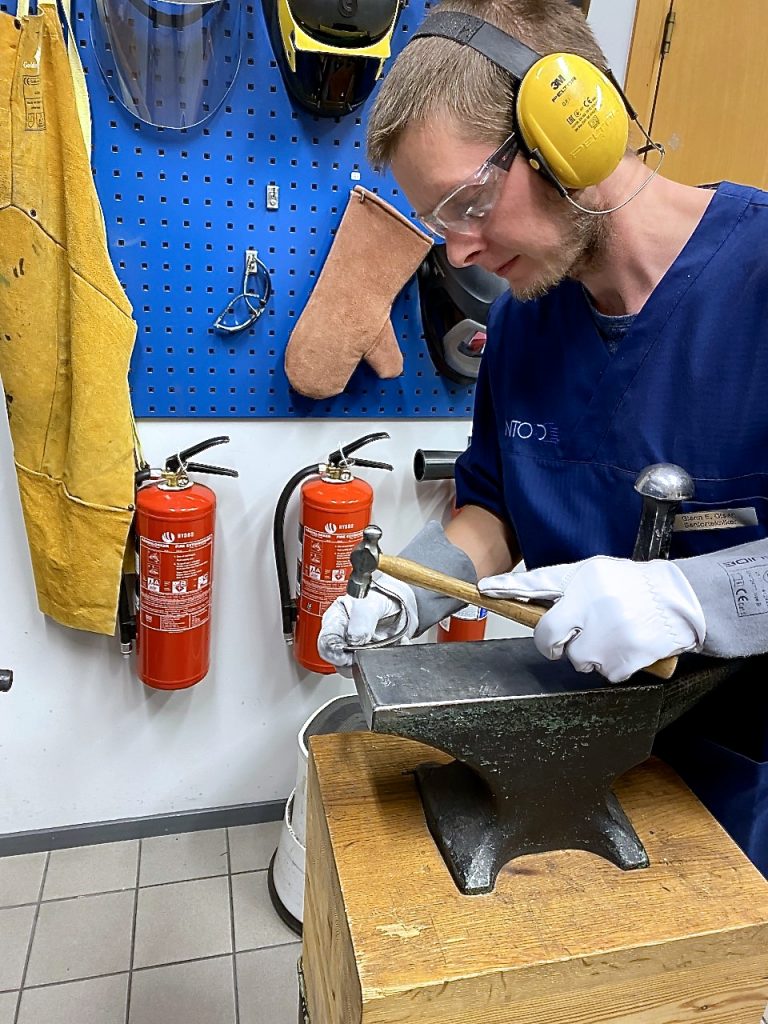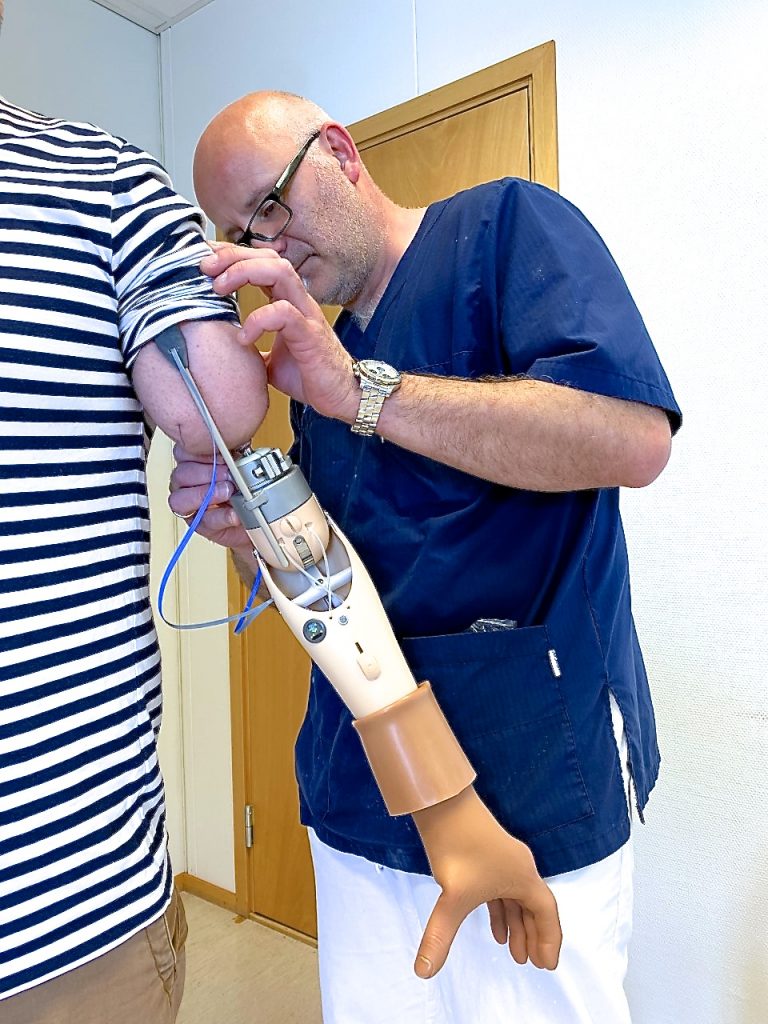– Vi tilpasser kreative håndproteser og grepsforbedringer til alle brukere
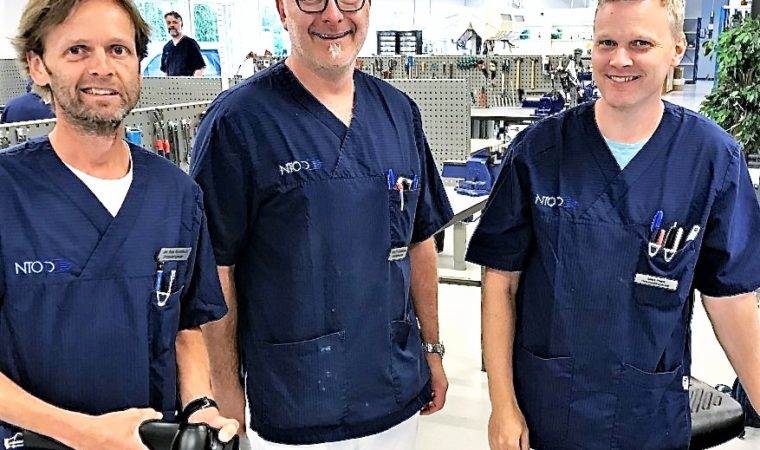
Ingeniørene ved NTO: Fra venstre: Jon Terje Myklebust, Trond P. Schonhowd og Mike Plant. Alle foto: private – Et velfungerende teamarbeid og et godt forhold til brukeren optimaliserer løsningene Oppfinnsomheten og produksjonen ved Norsk Teknisk Ortopedi- NTO på Hamar er høy. Med verkstedets oppstart på Hamar i 1989, har de vokst seg store med klinikker […]
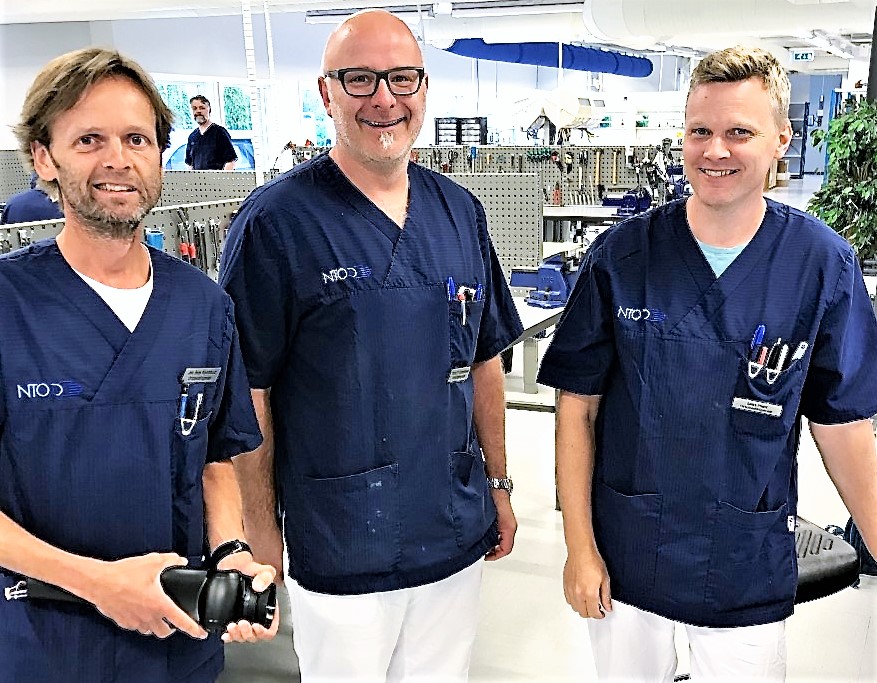
– Et velfungerende teamarbeid og et godt forhold til brukeren optimaliserer løsningene
Oppfinnsomheten og produksjonen ved Norsk Teknisk Ortopedi- NTO på Hamar er høy. Med verkstedets oppstart på Hamar i 1989, har de vokst seg store med klinikker som dekker de fleste områdene i landet.
Trond P. Schonhowd fra Moelv, har arbeidet som ortopediingeniør ved NTO siden 1996. Han startet rett i jobb etter å ha utdannet seg som ortopediingeniør i Glasgow.
– Hoveddelen av arbeidet vi utfører er armproteser. Likeså lager vi mange ulike typer grepsforbedringer til hender, for de som har et nedsatt grep eller hånd, sier han.
Dyktige ansatte
Trond løfter fram det supre arbeidsmiljøet på NTO, med totalt 27 dyktige ansatte som fordeles på tre ortopediingeniører. Av dem arbeider det hele 21 teknikere/hjelpearbeidere som produserer proteser og løsninger. De har også ansatt en daglig leder samt to som jobber i administrasjonen. Sammen med to ortopediingeniører reiser Trond rundt på klinikkene i hele landet.
– Det gode og dynamiske samarbeidet mellom alle ansatte, resulterer i gode løsninger innen grepsforbedringer, hånd- og armproser, sier Trond.
– Vi har også et tett samarbeid med rehabiliteringssenteret Innlandet på Ottestad, hvor vi får inn en del brukere med oppfølging fra ergo- og fysioterapeut og lege. Vi jobber med opptrening av brukeren, i tillegg til mer kompliserte målinger og tillaging av proteser. Det er svært viktig å få testet alt før bruk.
Proteser etter ulike behov
– Vi får inn brukere med mange ulike typer amputasjonsnivåer. Dette byr på en rekke utfordringer. Mens enkelte har en delhåndsamputasjon, har andre en underarm- eller skulderamputasjon.
På NTO lager de alle slags mulige proteser, også de mest avanserte og elektriske. Her konstruer de oftest grepforbedringsløsninger, i tillegg til en myoelektrisk protese- en allmenn protese, som kan anvendes til mange ulike gjøremål. Protesen har ulike åpningsmuligheter og med en kraft som gjør at du kan holde forsiktig i et pappkrus eller trillebord.
– Selv om du har mange muligheter med protesen, er den likevel ikke godt nok til å fungere til enkelte spesifikke oppgaver. En armamputert har gjerne behov for mange ulike typer proteser avhengig av aktivitetsnivå. Vurderingen tas sammen med bruker for optimale proteseløsninger, informerer han.
God oppfølging
– Før brukeren tar i bruk protesen for første gang, gir vi dem grunntrening og instruksjon i hvordan de kan anvende en protese på en best mulig måte. De får også opptrening av fysio- og ergoterapeut, sier han.
– Alle ortopediingeniører på NTO er nøye med å følge opp pasientene på en jevnlig basis. Noen kommer innom for å justere proteser. Vi får inn et jevnt tilsig av nye brukere. Vi merker at produksjonsmengden øker mer eller mindre hvert år. Vi lager jevnt over flere løsninger til hver enkelt bruker, sier Trond.
Letter og aktiviserer hverdagen
– En velfungerende protese vil bidra til å aktivisere og lette hverdagen og gjøre ting litt mindre komplisert. Likeledes vil bruk av proteser være med på å redusere merbelastning på den friske siden.
– Likevel vil de som tror at en protese vil kunne erstatte en nyamputert arm, oppleve en viss skuffelse. På sikt når brukeren får nok informasjon om alternative proteser og grepsforbedringer, vil situasjonen som regel bli litt enklere, legger han til.
Viktig å hente fram behovene
– Sammen med den nye brukeren forsøker vi å finne fram til hvilke ønsker og behov vedkommende har for sin protese. Kartleggingen forenkler arbeidet med å finne fram til gode løsninger. Det er fordelaktig å ha et velfungerende og nært forhold til brukeren, sier Trond.
– Vi rådfører også pasienten tidlig i fasen. Etter hvert som pasienten blir mer bevisst på sine egne ønsker og behov, er det enklere å skape optimale produkter og proteser. Et godt samarbeid mellom bruker og ortopediingeniør, er en forutsetning for at proteser vi lager fungerer best mulig, og ikke bare som en trøst, framhever han.
– Likeledes er det viktig å være bevisst på hvilke muligheter som kan tilbys, samtidig som du er åpen for at det finnes flere løsninger på behovet. Slik bidrar vi til å utvikle et optimalisert produkt som er tilpasset brukeren, sier han.
Avgjørende å få protesen optimalisert
Trond løfter fram de daglige utfordringene de møter med håndproteser. Å erstatte en hånds funksjoner er per dags dato umulig med kun en protese. Likeledes er utfordringen også å få til gode løsninger som fungerer godt i brukerens hverdag.
– Vår mest fremstående oppgave er å få resultatet så optimalisert og individuelt tilpasset som mulig. Siden det ikke finnes en protese som kan brukes til alle slags aktiviteter, lager vi mange ulike proteser med spesifikke funksjoner. Proteser med flere funksjoner er ofte litt svake i både konstruksjon og styrke til å kunne fungere optimalt, sier han.
Viderefører idéer
– Selv er jeg veldig heldig som har to hender. Derfor forsøker jeg å være oppmerksom på måten jeg anvender dem. Kunnskapen overfører jeg fordelaktig til kreasjon av nye proteser. Målet er å gjenskape det samme type bruksmønsteret for hånd. Vi tar også med oss erfaringene fra de ulike løsningene, som lages til pasienten sitt individuelle behov. På den måten trenger vi ikke å finne opp kruttet hver gang.
– Vi er også heldige som har med dyktige teknikere i teamet, som viderefører ingeniørenes smarte idéer. Pasienten kommer med utfordringen om hva som trengs og gjøres. Møter vi brukere med behov på noe som ikke eksisterer, klarer vi å finne fram til en god løsning på det, sier Trond.
